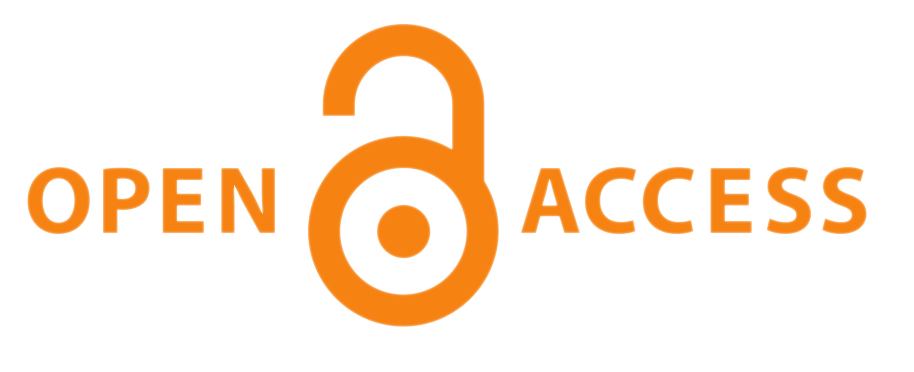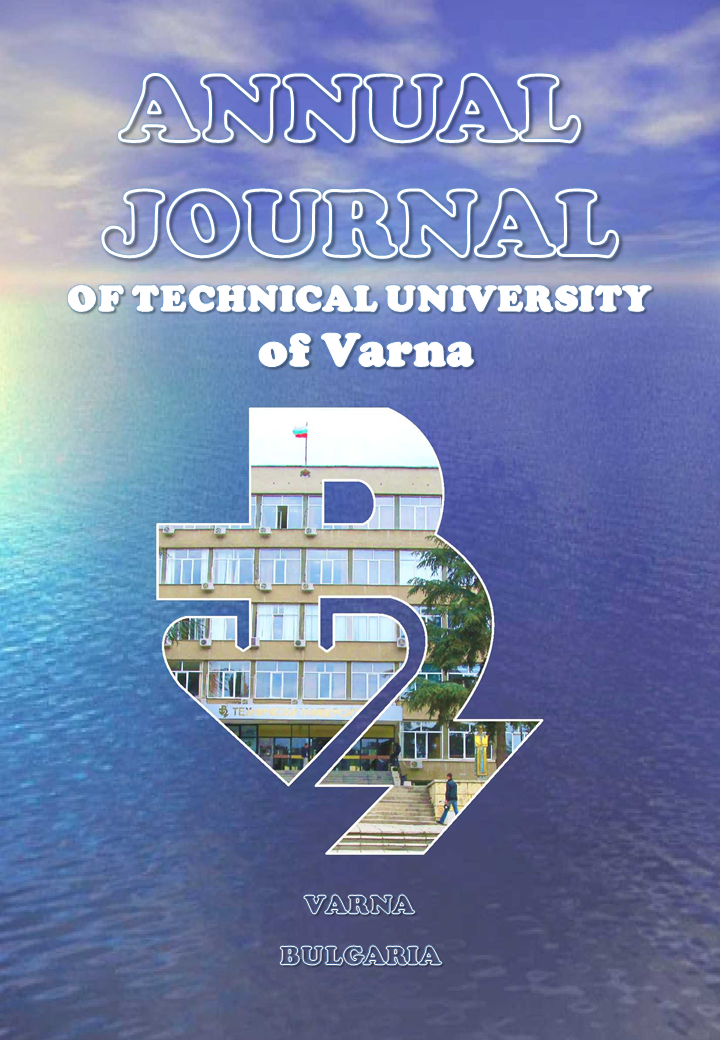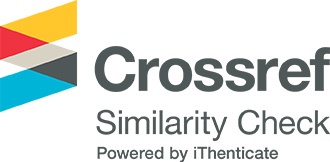Development of programmable logic controller algorithms for database communication
##semicolon##
https://doi.org/10.29114/ajtuv.vol8.iss1.266##semicolon##
алгоритъм##common.commaListSeparator## комуникация##common.commaListSeparator## протокол##common.commaListSeparator## контролер##common.commaListSeparator## MySQLАбстракт
The present paper provides a brief overview of the possibilities which can arise when outsourc-ing some of the more advanced functionalities usually developed for computers to a programma-ble logic controller. This approach is still being examined to fulfil its aim of improved communi-cation capabilities and provision of effective tools for advanced intelligent control systems. The paper, further, sets out to give an example of one such algorithm which is built upon the MySQL protocol.
Изтегляния
##submission.citations##
<li>Wang, J., & Tepfenhart, W. (2019). <i>Formal Methods in Computer Science</i>. CRC Press. <a href="https://doi.org/10.1201/9780429184185" target="_blank">Crossref</a></li>
<li>Keller, R. (2001). <i>Classifiers, Acceptors, Transducers, and Sequencers</i>. Retrieved from <a href="https://www.cs.hmc.edu/~keller/cs60book/12%20Finite-State%20Machines.pdf" target="_blank">https://www.cs.hmc.edu/~keller/cs60book/12%20Finite-State%20Machines.pdf</a></li>
<li>Vaswani, V. (2004). <i>MySQL™: The Complete Reference</i>. McGraw Hill India.</li>
<li>Pajankar, A. (2020). <i>Learn SQL with MySQL</i>. BPB Publications. Retrieved from <a href="https://www.perlego.com/book/1681500/learn-sql-with-mysql-pdf" target="_blank">https://www.perlego.com/book/1681500/learn-sql-with-mysql-pdf</a> (Original work published 2020)</li>
<li>Cerf, V. G., & Cain, E. (1983). <i>The DoD internet architecture model</i>. Computer Networks (1976), 7(5), 307-318. <a href="https://doi.org/10.1016/0376-5075(83)90042-9" target="_blank">Crossref</a></li>
<li>Abbate, J. (2000). <i>Inventing the Internet</i>. MIT Press.</li>
<li>Димитров, В., Николов, Н., & Александрова, М. (2013). <i>Автоматизация на технологични процеси</i>. ТУ Варна.</li>
<li>Петров, П., & Узунов, В. (2014). <i>Aрхитектура на системите с PLC SIMATIC S7</i>. ТУ-Варна. ISBN 978-954-20-0659-6</li>
<li>Stapko, T. (2007). <i>Practical Embedded Security</i>. Elsevier. <a href="https://doi.org/10.1016/B978-075068215-2.50006-9" target="_blank">Crossref</a></li>
<li>Soltanian, M., Amiri, I., & Neeley, M. (2016). <i>Theoretical and Experimental Methods for Defending Against DDoS Attacks</i>. Syngress.</li>
<li>Stevens, M., Bursztein, E., Karpman, P., Albertini, A., & Markov, Y. (2017). <i>The First Collision for Full SHA-1</i>. <a href="https://doi.org/10.1007/978-3-319-63688-7_19" target="_blank">Crossref</a></li>
<li>Knuth, D. (1973). <i>The Art of Computer Programming, Vol. 3, Sorting and Searching</i>. Addison-Wesley.</li>
<li>Berger, H. (2014). <i>Automating with SIMATIC S7-1500</i>. Publicis MCD Werbeagentur GmbH.</li>
</ul>
##submission.downloads##
Публикуван
##submission.howToCite##
Брой
Раздел (Секция)
##submission.license##
СПОРАЗУМЕНИЕ ЗА ПУБЛИКУВАНЕ
Годишника на Технически университет - Варна (ГТУВ) цели да гарантира, че постъпващите статии се публикуват, като същевременно се предоставя значителна свобода на публикуващите ги автори. За изпълнение на тази цел, ГТУВ поддържа гъвкава политика относно авторските права, което означава, че няма прехвърляне на авторски права от автора на издателя, а авторите запазват изключително авторско право върху интелектуалното си произведение.
При изпращане на статия, Отговорния автор трябва да се съгласи и приеме правилата и условията за публикуване, изложени в настоящото Споразумение за публикуване, които са както следва:
ПРЕДОСТАВЯНЕ НА ПРАВА ОТ ОТГОВОРНИЯ АВТОР
Отговорния автор предоставя на ГТУВ за времето на пълния срок на авторското право и всяко следващо удължаване или подновяване, следното:
• Неотменимо, неизключително право да публикува, възпроизвежда, предоставя, разпространява или по друг начин използва предоставената работа в електронни и печатни издания и в производни произведения в целия свят, на всички езици и във всички известни съществуващи или в последствие възникнали медии.
• Неотменимо, неизключително право да създава и съхранява електронни архивни копия на работата, включително правото да депозира предоставената работа в дигитални хранилища с отворен достъп.
• Неотменимо, неизключително право на лицензиране на други лица да възпроизвеждат, превеждат, преиздават, предоставят и разпространяват предоставената работа при условие, че авторите са надлежно идентифицирани (за момента това се извършва чрез публикуване на произведението под лиценз Creative Commons Attribution 4.0 Unported).
С предоставянето на работата за публикуване, авторските права върху материала остават на авторите. Авторите запазват всички патентни, търговски марки и/или други права върху интелектуалната си собственост.
ЗАДЪЛЖЕНИЯ НА ОТГОВОРНИЯ АВТОР И СЪАВТОРИТЕ
При последващо разпространение или повторно публикуване на предоставената работа, Отговорния автор се съгласява да идентифицира ГТУВ, в който е публикувано произведението като първоначален източник на първото публикуване на работата. Отговорния автор гарантира, че съавторите също ще посочват ГТУВ като източник на първото публикуване, когато разпространяват, преиздават или се позовават на настоящата работа в бъдещи свои публикации.
ГАРАНЦИИ ОТ СТРАНА НА ОТГОВОРНИЯ АВТОР
Отговорния автор гарантира че предоставената за публикуване работа не нарушава никои действащи нормативни разпоредби или законни права на която и да е трета страна. Същия гарантира че работата не съдържа какъвто и да е материал, който може да се възприеме от читателската аудитория като неетичен, компрометиращ, нехуманен, расистки, клеветнически и/или нарушаващ авторски и/или имуществени права, права на интелектуална собственост или поети ангажименти за поверителност към трети страни. Отговорния автор гарантира че предоставеният материал е с оригинално съдържание, не е официално публикуван в никое друго издателство, както и че не е в процес на публикуване пред други издателства. Отговорния автор също така гарантира че притежава съответните правомощия да сключи настоящото споразумение. Ако предоставяната работа е подготвена съвместно с други съавтори, Отговорния автор гарантира че всички останали съавтори са информирани и са съгласни предоставения материал да бъде публикуван в ГТУВ.
Отговорния автор лично (или от името на авторския колектив) дава съгласието си да не въвлича по никакъв начин ГТУВ като страна в каквито и да било научни, академични, административни и/или съдебни спорове, в случаите на установени нарушения на горепосочените декларации и гаранции.
ПРАВА И ЗАДЪЛЖЕНИЯ НА ГТУВ
ГТУВ се съгласява да публикува предоставения материал, в случаите когато същия отговаря напълно на всички необходими качествени, технически и редакционни изисквания, като го идентифицира еднозначно с авторите му. В следствие на настоящото споразумение, на ГТУВ се предоставя правомощие да упражнява права при необходимост от името на авторите върху трети лица, като например в случаите на установено плагиатство, нарушаване на авторски права и др.
Декларация за поверителност на лични данни
Вашите имена и имейл адреси, въведени в уебсайта на ГТУВ, ще бъдат използвани само и изключително за обявените цели на настоящото списание и няма да бъдат използвани за никакви други цели от издателя или предоставяни на друга - трета страна.
Издателят се задължава да извърши всички необходими действия, цялата предоставена лична информация да остане конфиденциална, в рамките на издателя и да не бъде споделена с външни обекти или субекти, освен ако не е дадено предварително изрично разрешение от собственика на личните данни.
Вашата лична информация няма да бъде обект на продажба, разпространение или публикуване по какъвто и да е начин и под каквато и да е форма.









